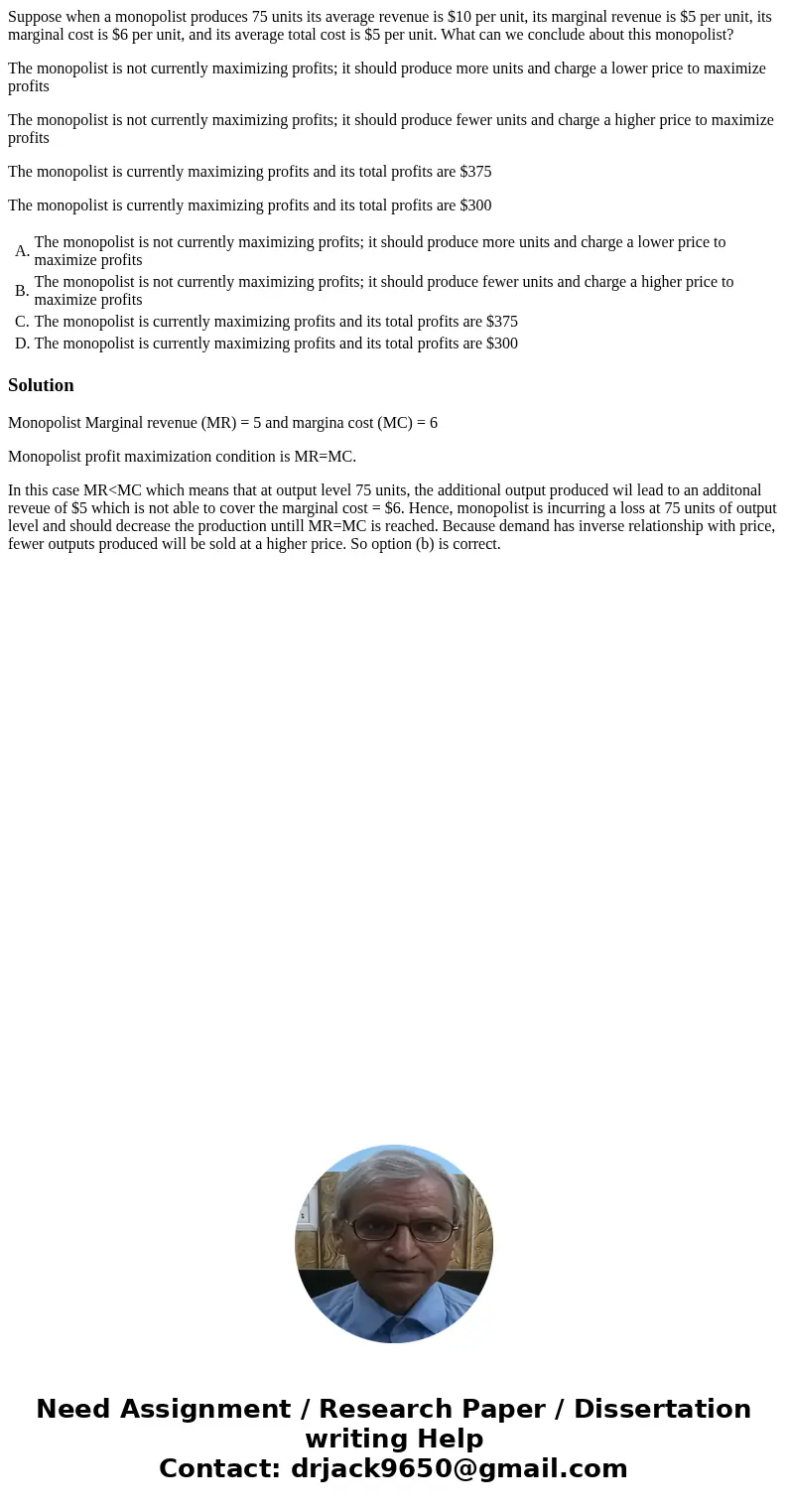Suppose when a monopolist produces 75 units its average reve
Suppose when a monopolist produces 75 units its average revenue is $10 per unit, its marginal revenue is $5 per unit, its marginal cost is $6 per unit, and its average total cost is $5 per unit. What can we conclude about this monopolist?
The monopolist is not currently maximizing profits; it should produce more units and charge a lower price to maximize profits
The monopolist is not currently maximizing profits; it should produce fewer units and charge a higher price to maximize profits
The monopolist is currently maximizing profits and its total profits are $375
The monopolist is currently maximizing profits and its total profits are $300
| A. | The monopolist is not currently maximizing profits; it should produce more units and charge a lower price to maximize profits | |
| B. | The monopolist is not currently maximizing profits; it should produce fewer units and charge a higher price to maximize profits | |
| C. | The monopolist is currently maximizing profits and its total profits are $375 | |
| D. | The monopolist is currently maximizing profits and its total profits are $300 |
Solution
Monopolist Marginal revenue (MR) = 5 and margina cost (MC) = 6
Monopolist profit maximization condition is MR=MC.
In this case MR<MC which means that at output level 75 units, the additional output produced wil lead to an additonal reveue of $5 which is not able to cover the marginal cost = $6. Hence, monopolist is incurring a loss at 75 units of output level and should decrease the production untill MR=MC is reached. Because demand has inverse relationship with price, fewer outputs produced will be sold at a higher price. So option (b) is correct.

 Homework Sourse
Homework Sourse